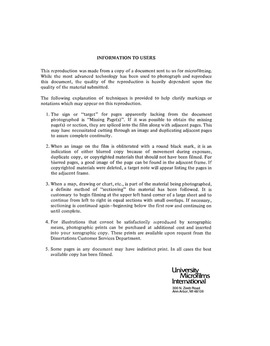| dc.contributor.author | Finley, Nancy Jane, | en_US |
| dc.date.accessioned | 2013-08-16T12:28:40Z | |
| dc.date.available | 2013-08-16T12:28:40Z | |
| dc.date.issued | 1982 | en_US |
| dc.identifier.uri | https://hdl.handle.net/11244/5024 | |
| dc.description.abstract | Following a social control theory perspective, this research analyzes differences between males and females in self-reported criminal activity. A sample of 353 adults was used to examine explanations of the gender-crime relationship by focusing on two issues. First, it was suspected that explanations for the sex-deviance relationship are masked when all females are compared to all males. Specification of categories of females who are more conforming helps delineate the dimensions of the gender roles that produce the sex variation in deviance. Therefore, the expectation was that differences in self-reported deviancy can be accounted for by subdividing females into traditional and nontraditional categories. Traditionalism was measured in two ways, structural traditionalism (i.e., those women who occupy positions in the social structure typically reserved for females), and cultural traditionalism (i.e., those women who accept traditional expectations and attitudes of feminine behavior). Nontraditional women were found to be more similar to males in rates of criminality than traditional women because they are more similar to men in terms of positions they occupy and gender role expectations. | en_US |
| dc.description.abstract | The second issue concerns why nontraditional women are more similar to men in criminality. It was posited that the reason that traditional females are more likely to conform than nontraditional females is that their attachment to the gender role leads them to be more deterred by sanctions and guilt. They perceive greater penalties and the penalties have a greater impact on them because of their structural positions and gender role expectations. It was discovered that nontraditional women were more similar to males in criminality because they are more similar to males in perceptions of the penalties associated with crime, whether those penalities are imposed by the state, peers, or oneself. Traditional women had perceptions of higher threats of sanctions and guilt associated with deviance than either males or nontraditional females. | en_US |
| dc.format.extent | viii, 178 leaves ; | en_US |
| dc.subject | Sociology, Criminology and Penology. | en_US |
| dc.title | Gender and the inhibitors of crime : | en_US |
| dc.type | Thesis | en_US |
| dc.thesis.degree | Ph.D. | en_US |
| dc.thesis.degreeDiscipline | Department of Sociology | en_US |
| dc.note | Source: Dissertation Abstracts International, Volume: 43-06, Section: A, page: 2110. | en_US |
| ou.identifier | (UMI)AAI8225501 | en_US |
| ou.group | College of Arts and Sciences::Department of Sociology | |
